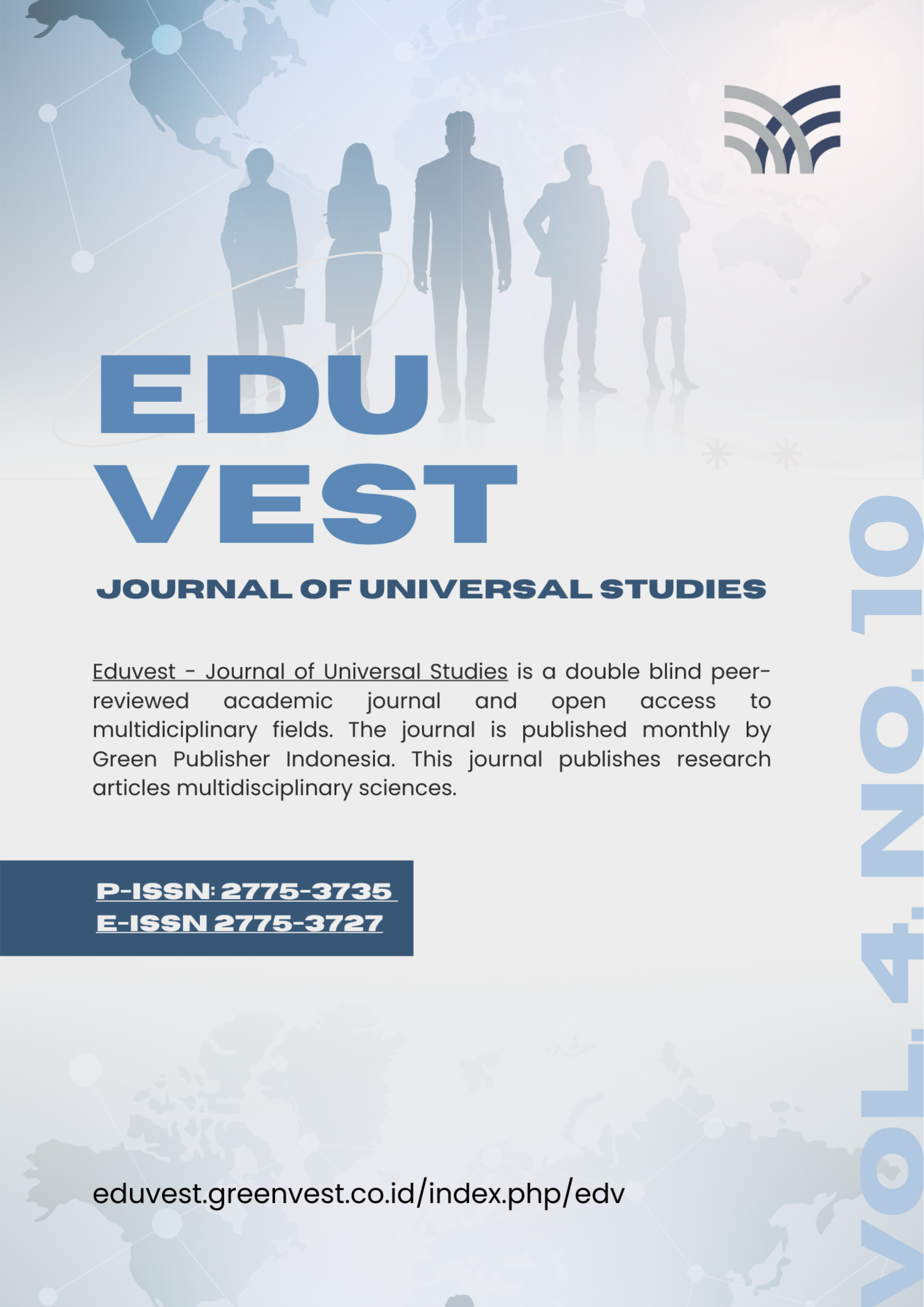India As a Democratic Nation- Concepts and Perceptive
DOI:
https://doi.org/10.59188/eduvest.v4i10.43674Keywords:
Democracy, Constitution, Elections, India, Political SystemsAbstract
India, as the world's largest democracy, presents a unique and diverse political landscape. Since gaining independence in 1947, it has upheld democratic ideals amidst challenges of diversity, inequality, and external threats. This paper explores the foundational concepts of Indian democracy, its key features, and its role as a beacon of democratic governance in the global arena. By examining India’s electoral system, constitutional framework, and challenges, we gain insights into how democracy functions in one of the most populous and complex nations in the world.
References
Das, A. K. (2023). Grassroots Democracy and Governance in India: Understanding Power, Sociality and Trust. Springer.
Hausing, K. K. S. (2014). Asymmetric federalism and the question of democratic justice in Northeast India. India Review, 13(2), 87–111.
Hayes, J. (2016). Talented Democrats in a Modern State. Making Identity Count: Building a National Identity Database, 114.
Hidalgo, O. (2020). Constitutional Democracy and Indian Secularism: Considerations from the Perspective of Democratic Antinomies. Dimensions of Constitutional Democracy: India and Germany, 91–105.
Khan, A. (2022). Role of democracy play any role in Pakistan’s foreign policy towards India? Navigating 2008 onwards era. SADIQ Journal of Pakistan Studies, 2(2).
Kumar, P. (2020). A CONCEPTUAL FRAMEWORK FOR RURAL DEVELOPMENT IN INDIA’S PARTICIPATORY DEMOCRATIC DECENTRALIZED SYSTEM. International Journal of Management (IJM), 11(10).
Kumar, R. (2002). India: A ‘nation‐state’or “civilisation‐state’’’?”’ South Asia: Journal of South Asian Studies, 25(2), 13–32.
Leone, F. (2019). Prophet and Statesmen in Crafting Democracy in India: Political Leadership, Ideas, and Compromises. Lexington Books.
Liddall, J. (2022). Managing Ethnic Diversity and Substate Nationalism in the World’s Largest Democracy: Lessons from Punjab and Tamil Nadu. Leviathan, 12(2).
Maharatna, A. (n.d.). India’s Perception, Society, and Development.
Pulparampil, J. (2018). Nation building and local leadership: A study from south India. Educreation Publishing.
Scholl, H. J., & Scholl, M. C. (2014). Smart governance: A roadmap for research and practice. IConference 2014 Proceedings.
Sethi, A. (2021). Populist Pulp in a Democracy: Propagandist Textbooks of the Hindu Right. The Politics of Authenticity and Populist Discourses: Media and Education in Brazil, India and Ukraine, 197–218.
Srinivasan, R. (2020). Representative Democracy, Identity Politics, and Participatory Governance: The Indian Experiment. In Understanding Governance in South Asia (pp. 175–208). Routledge.
Thirumali, I. (2021). India: Nation and its People: Castes and Parties in the Making of Democracy. Notion Press.
Published
How to Cite
Issue
Section
License
Copyright (c) 2024 Gayatri Sunkad

This work is licensed under a Creative Commons Attribution-ShareAlike 4.0 International License.











